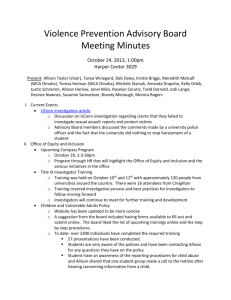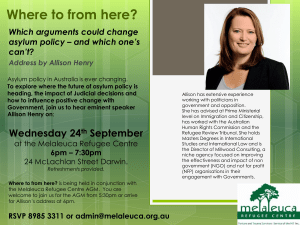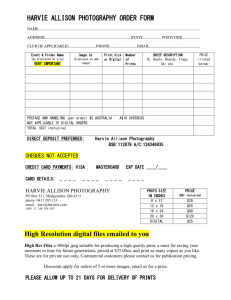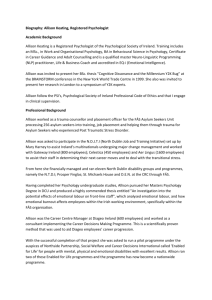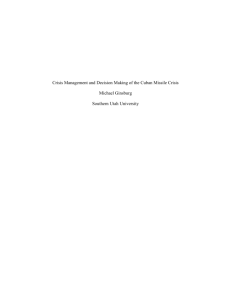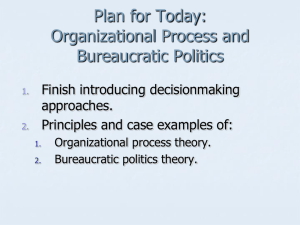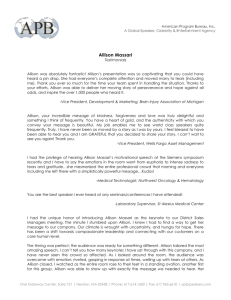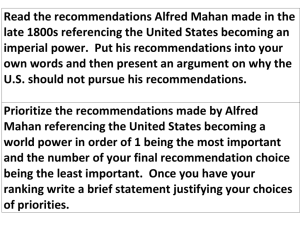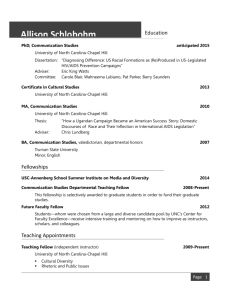Conceptual Models and the Cuban Missile Crisis
advertisement
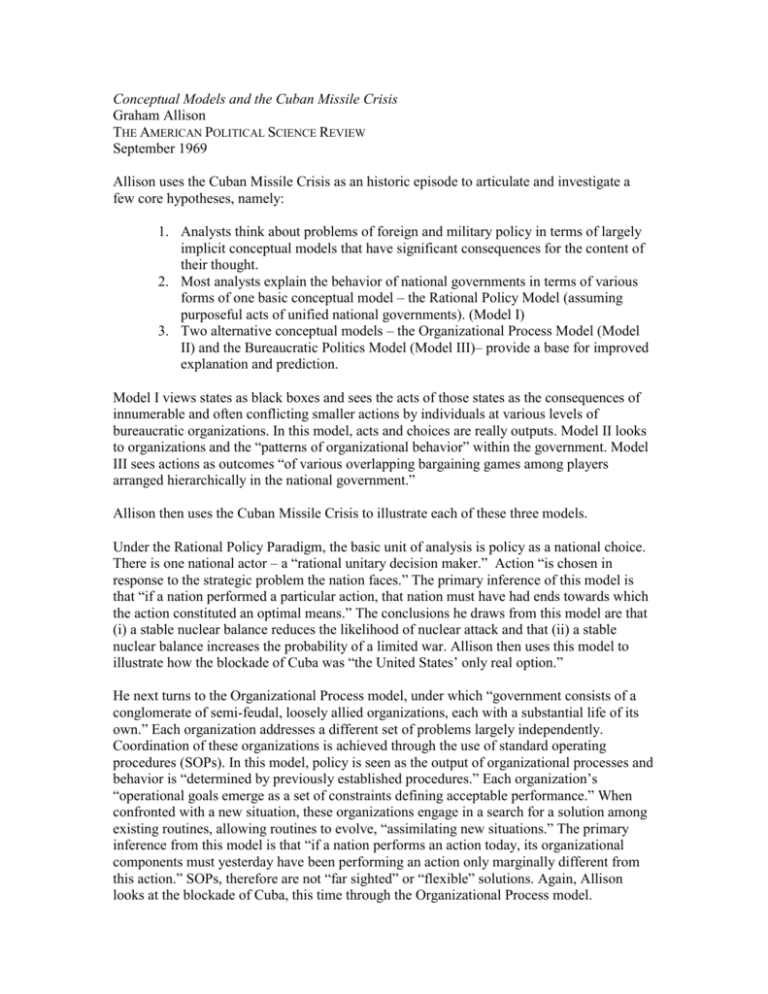
Conceptual Models and the Cuban Missile Crisis Graham Allison THE AMERICAN POLITICAL SCIENCE REVIEW September 1969 Allison uses the Cuban Missile Crisis as an historic episode to articulate and investigate a few core hypotheses, namely: 1. Analysts think about problems of foreign and military policy in terms of largely implicit conceptual models that have significant consequences for the content of their thought. 2. Most analysts explain the behavior of national governments in terms of various forms of one basic conceptual model – the Rational Policy Model (assuming purposeful acts of unified national governments). (Model I) 3. Two alternative conceptual models – the Organizational Process Model (Model II) and the Bureaucratic Politics Model (Model III)– provide a base for improved explanation and prediction. Model I views states as black boxes and sees the acts of those states as the consequences of innumerable and often conflicting smaller actions by individuals at various levels of bureaucratic organizations. In this model, acts and choices are really outputs. Model II looks to organizations and the “patterns of organizational behavior” within the government. Model III sees actions as outcomes “of various overlapping bargaining games among players arranged hierarchically in the national government.” Allison then uses the Cuban Missile Crisis to illustrate each of these three models. Under the Rational Policy Paradigm, the basic unit of analysis is policy as a national choice. There is one national actor – a “rational unitary decision maker.” Action “is chosen in response to the strategic problem the nation faces.” The primary inference of this model is that “if a nation performed a particular action, that nation must have had ends towards which the action constituted an optimal means.” The conclusions he draws from this model are that (i) a stable nuclear balance reduces the likelihood of nuclear attack and that (ii) a stable nuclear balance increases the probability of a limited war. Allison then uses this model to illustrate how the blockade of Cuba was “the United States’ only real option.” He next turns to the Organizational Process model, under which “government consists of a conglomerate of semi-feudal, loosely allied organizations, each with a substantial life of its own.” Each organization addresses a different set of problems largely independently. Coordination of these organizations is achieved through the use of standard operating procedures (SOPs). In this model, policy is seen as the output of organizational processes and behavior is “determined by previously established procedures.” Each organization’s “operational goals emerge as a set of constraints defining acceptable performance.” When confronted with a new situation, these organizations engage in a search for a solution among existing routines, allowing routines to evolve, “assimilating new situations.” The primary inference from this model is that “if a nation performs an action today, its organizational components must yesterday have been performing an action only marginally different from this action.” SOPs, therefore are not “far sighted” or “flexible” solutions. Again, Allison looks at the blockade of Cuba, this time through the Organizational Process model. Allison finally considers the Bureaucratic Politics model. This model sees the leaders of organizations as a player in his own right “in a central, competitive game.” In this model, policy is apolitical outcome, resulting from “compromise, coalition, competition, and confusion among government officials who see different faces of an issue.” Here, the individual’s position in the government is key – “positions define what players both may and must do.” Games are played amongst individuals to determine outcomes, based on bargaining advantages, skill and will, and other players perceptions. Under this model, “important government decisions or actions emerge as collages composed of individual acts, outcomes of minor and major games and foul-ups…. Understanding this outcome requires that it be disaggregated.” The dominant inference then is that “if a nation performed an action, that action was the outcome “of bargaining among individuals and groups within the government.” Allison then considers the blockade through this third perspective. A few conclusions are presented. First, different analysts who rely on different models, will reach different explanations. Second, the use of Models II and III can improve the explanations and predictions currently being generated by Model I analysis.
